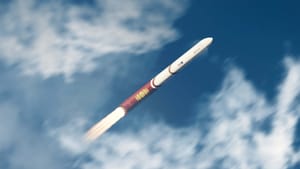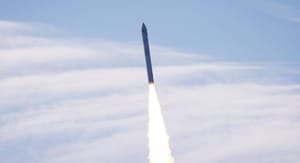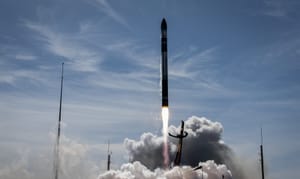
Mar 28, 2024
Latitude - returning launch to Europe?
French space startup Latitude is hoping to launch the first French-built rocket of the 21st century. Their rocket Zephyr is currently aiming for a maiden flight in 2025.
Latitude is a self-described pioneering French rocket launch company on a mission to push the boundaries of space technologies, fostering a better and brighter future for all. The company is based of Reims and was founded back in 2019 as Prometheus Space, but rebranded to Venture Orbital Systems before becoming Latitude.
The company is believed to be aiming to offer launches of Microsatellites for as little as 35,000 United States Dollars per kilogram, or 3.5 million per launch. Latitude believes that 10,000 small satellites will be built by 2030 with forty percent needing a dedicated launch, the hope to capitalize on the dedicated launches.
After the debut flight of Zephyr in 2025, the company is hoping to ramp up to twenty launches in 2026 before increasing to one launch per week in the coming years. Latitude is believed to be working on a launch site in Scotland and French Guyana to reach this cadence.
Zephyr
Latitude is currently working on their Zephyr two-stage small-lift orbital launch vehicle to enable launches of small CubeSats from the European continent. Zephyr is believed to be 19 meters tall and 1.5 meters in diameter, the launch vehicle keeps the diameter up the entire rocket. Zephyr is planning to launch Microsatellites as a dedicated service instead of having to rely on a 'rideshare' service.

Latitude claims the rocket will be able to launch 100 kilograms into a low Earth orbit, or 80 kilograms into a sun-synchronous orbit. The company has said that they plan to launch from Saxavord in Scotland and Kourou in French Guyana. Saxavord is an advantageous launch site for sun-synchronous launches due to it sitting far north of the equator, and having no inhabited land downrange. Kourou is already a well-established spaceport and is well suited for low Earth orbit missions due to its proximity to the equator, being close to the equator allows rockets to take advantage of the Earth's rotation while heading to orbit.

Zephyr is planned to be powered by seven Navier sea-level engines on the first-stage, burn time for the first-stage is unknown along with the total thrust. The second-stage is also planned to be powered by a single Navier vacuum-optimized engine, the burn time and thrust has also not been shared.
Latitude has kept details on Zephyr under wraps since unveiling the rocket so the current weight and thrust of the vehicle are unknown. Based on previous reports, the total first-stage thrust of Zephyr could be as high as 15.7 tons of thrust, this would have each Navier engine produce 2.2 tons of thrust.
The fuels for both stages are currently planned to be rocket-grade kerosene and liquid oxygen.
Navier
Navier is Latitude's in-house developed rocket engine that will power Zephyr. The engine is believed to burn rocket-grade kerosene and liquid oxygen as fuels. The engine is also reportedly 3D printed, which could help increase production.

Navier is believed to be an open-cycle gas-generator engine using High Test Peroxide to run its turbopumps. High Test Peroxide is used as a catalyst for the fuels and inside the engine. Previous plans for Navier had the engine be electric pump fed but those plans appear to have been dropped.
The thrust of Navier has not been shared by Latitude at the time of writing but is believed to be between 1.2 and 2.2 tons of thrust. Comments online from Chief Executive Officer, Stanislas Maximin, point towards a higher thrust for Navier.

Navier is reported to have started test firings in January last year, with testing of a newer turbopump for the engine having occurred recently this March. Latitude has shared occasional updates on its engine development and is believed to have fired four different engines with more in production.



